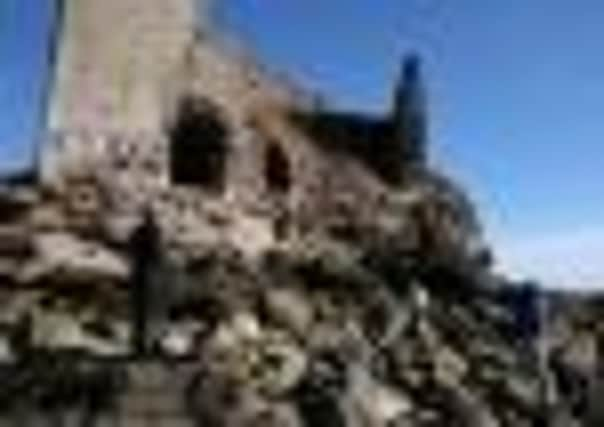Citizen army urged to save Scotland’s coastal history


Walkers are being recruited to keep a protective eye on almost a thousand sites of archaeological interest scattered around Scotland’s coastline that may otherwise disappear.
The “citizen archaeologist” project is being launched by a charity, Scottish Coastal Archaeology and the Problem of Erosion (Scape), and St Andrews University, which want coastal visitors to track sites on an interactive map, take pictures of any erosion they see and answer questions about what it looks like, via a free smartphone app.
Advertisement
Hide AdAdvertisement
Hide AdThe sites range from the vanishing remains of former crofting villages to national landmarks such as Skara Brae in Orkney, Stenness Fishing Station in Shetland and the Pile Lighthouse on the Tay estuary. But Scape also wants reports of new finds uncovered by the erosion process.
St Andrews research fellow Tom Dawson, who is running the project, said: “Scotland is quite remarkable compared to a lot of other countries as we have some incredible heritage and some of the best coastal sites,” he said. “But collecting information on archaeological sites in Scotland that are at risk from erosion is a problem because it’s a natural process and there is no single agency responsible for responding.
“There also isn’t a pot of money to deal with eroding sites, so we’re asking people to tell us if they see places that are threatened by erosion, so we can hopefully do something about it.”
The first stage of the project will ask members of the public to provide information via the app, which will be downloadable free from the Scape website or via Android Market. The phone app has a simple, multiple-choice form which will allow anyone to take part. The location of sites will be recorded using the phone’s built-in GPS system.
A spokesperson for Scape said: “We want people to tell us about changes to sites since they were originally surveyed. We know that there are some sites which were a high priority for action when originally located, but which may now have been destroyed. We also want to hear about new sites that have been discovered due to erosion.”
Sites that are of particular interest to the project include Redkirk Point on the Solway Firth, which has in the past produced both Mesolithic and medieval finds, Kings Mount in Eyemouth, a 16th-century fort which was refortified by the French, Boddin limekiln in Angus, Dumbuck Crannog, an Iron Age island dwelling in the River Clyde, and Hodgalee Iron Age site on Orkney.
The hope is that once erosion has been identified in key areas, work can be done to limit the damage by carrying out more research, launching archaeological studies where necessary and erecting coastal defences.
Dawson said: “We’ve got 940 sites which we want the public to look at over the course of the project. What we’re trying to find out is how many of these sites have disappeared because of erosion, and how many are in a worse condition than they were.
Advertisement
Hide AdAdvertisement
Hide Ad“Since the original Scape survey 15 years ago, which examined areas that had suffered from coastal erosion, some of these sites may no longer exist. We have examples where people have seen ancient houses on beaches in Orkney, but we think we won’t see them now because they’ve simply disappeared due to coastal erosion. We need people to check these places and see if they are still there, and if they are, we need to do something about them.”
Dawson said that Scottish communities have proved extremely helpful in the past in helping the group identify sites suffering from coastal erosion.
“We have a number of sites that have been identified and are now being worked on that we have been alerted to by locals. There are groups all over the place expressing an interest in projects, and they’re not coming from archaeology groups, but community councils and local organisations like that,” he said.
Skara Brae is perhaps Scotland’s most famous coastal archeological site. A stone-built Neolithic settlement on Orkney, it remained hidden until 1850 when a huge storm revealed the village, which had been covered by sand and earth for thousands of years.
Fiona Hyslop, Cabinet secretary for culture and external affairs, said: “This is a wonderful project to give the thousands of Scots with a passion for archaeology the chance to help record important archaeological sites along our coastline.
“We know there is huge public interest in protecting our heritage and our coastal landscape, and this project creates an open gateway to anyone working, walking or holidaying at the coast to make a real difference in identifying sites under threat and evaluate what action can be taken.
“Scape has led the field in highlighting the erosion of coastal sites and it is a credit to its members and research that it has found a way to use incredibly accessible mobile technology to improve the national records through the creative use of local expertise.”